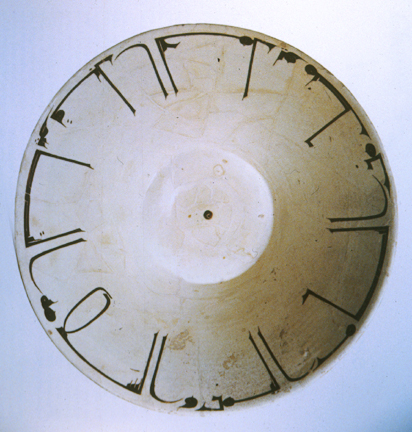Islam was a defining force in the daily lives of people of the region, and likewise had an effect on the arts as well. Following strictly the dictate that 'thou shalt not create any graven images,' Islamic artists were prohibited from the depiction of figures of people or animals in art. Instead the art of Islam abounds with floral motifs and intricate geometry and arabesques. The prohibition was not followed strictly, especially in the more domestic arts of the home, but was rarely used in any religious context.
The earliest, written, cursive form of Arabic is known as Kufic, and the bold, flowing script can be seen used as a border on this bowl from Nishapur, and reads 'Planning before work protects you from regret.' Inscriptions found on Islamic ceramics are usually of this type, benign admonishments toward leading a good life, and never include historical information. Kufic was the script used by devout Muslims to record the Koran, and was so named after the city, Kufah, in what is modern Iraq, which was an early center of Islamic culture. Ware from Nishapur (in what is modern day Iran), used a white slip on a terra cotta body to give a lighter surface for painting. Designs were then painted in slips of black, tomato red, or brown, derived from iron oxide bearing clays. Nishapur pottery often features large, undecorated areas of negative space, such as this example. The potters there had learned that patterns painted using glaze were apt to run (as in sancai), and got around the problem by mixing their pigments into the clay slips used for decorating. A clear glaze would cover the entire piece, and the colored slips were less likely to run.

Bowl with Kufic Inscription, Nishapur, 18" d., 10th Century


